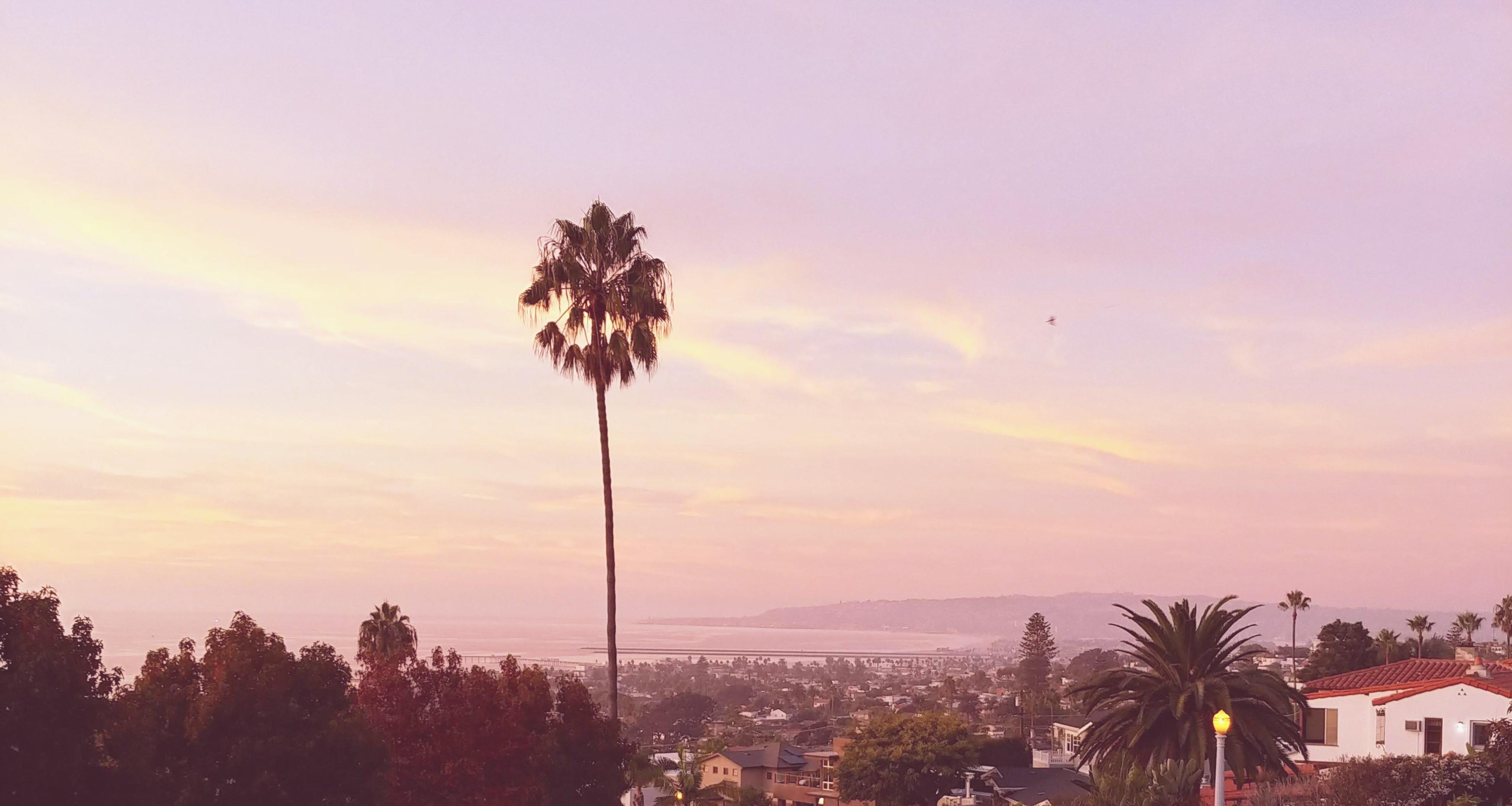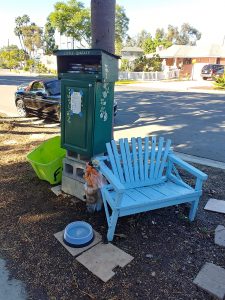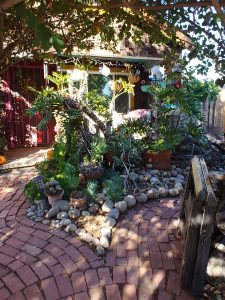
10 Nov Lives without breeze & other Urban reflections
As a Spanish citizen, I have grown up in european cities- Andalusian towns, downtown Madrid… cities where pedestrians have predominant power. I have seen the progress of the last 10 years, the tendency to create pedestrian-only areas.
After school, I worked in urbanism for almost a year in Madrid, as collaborator in several investigation projects analyzing european experimental urban tesst, or redesigning and renovating degraded areas. We followed ideas and concepts that included green spaces, social mixes, productive city elements and circular economy.
With this in mind, and imagining Hollywood-like movies scenes, I came to the US, and after a couple of years living in here, this is what I observed.
FIRST REFLECTION: LIVES WITHOUT BREEZE
The term Lives without breeze popped-up in my mind after living in Santa Fe (NM) for a month. The landscape in that area of the US is one of my favorites, full of power and hosting the most spectacular thunder storms I have never witnessed… but the large flat areas also brought strong winds.
That wind would not be a problem for a well-heeled person though: that person would wake up in the morning protected inside their house, go through the kitchen door to the garage, enter the car, open the garage door, drive to work, park in the garage at work and enter their office. The process would be in reverse for the trip back home.
This person would not have breathed anything other than still air in all their day, and the only sun received would through the windows of the car, office or home. If they work every day of the week, and on weekends are too tired to want to do nothing but relax at home, they could spend five to seven days living in a closed container (room, car, elevator…) and breathing unmoving air. If they needed groceries, the only outdoor air breathed is in a huge parking lot full of moving cars.
In Southern California, public transportation can be surprisingly good but is still in need of further development. There is a enormous problem with traffic which is only solved by taking cars out of daily routines. People need to drive less, and walk more. Walk to the bus, through a park, on the sidewalk along local stores… The way of living the city in America is car-dependant, and that needs to change.
Slavoj Zizek, in his book Violence: Six Sideways Reflections, explains the way a system can hold violence within its own configuration. This type of system is difficult to perceive since it would not break out as disruptive chaos in front of normality, but would exist as normality itself. The way cities were developed in the 1950’s, as huge infrestructures utopias (like the Futurama of Thomas Bel Geddes[1]), have became violent systems of mobility, allowing us to travel long distances totally encapsulated.
We need to breath clean outdoor air in our daily life.
SECOND REFLECTION: THE MOST BEAUTIFUL DOG TOILET
Around the Internet the joke claims that cats and kitties have silently enslaved Mankind. On the other hand, we blindly believe dogs are our friends. However, the truth is that a cat will deposit its wastes in its own box, meanwhile dogs in american suburbia mock one of the big achievements of the 50s urbanism: the front yard.
One fact about our culture can frame my argument: the two most important contributions America has made to the world history of landscapes are the front yard and the wilderness preserve. What can we say about such a culture? [2]
The concept was clear: the front yard was public, what everybody would see (and judge), the place where once a year you may do a yard sale or the kids would sell lemonade; and the back yard was the private area, where you would dare to actually enjoy your time and take advantage of the mortgage-dependent space you work hard to pay for.
When a space distribution is proposed, when areas are limited and when a way of living is designed, the applied concepts will hold their own ideology. Recalling what was mentioned in the last point by Zizek: it is a violent way of living.
During my holidays in the small town of Belmont (NY), where corn fields and picturesque house-farms are surrounded by green, perfect lawn, I could not avoid noticing how every day I would see at least three or four people driving the lawn mowers.
There is a lot of ideas worth comenting here. The first one coming to my mind is Spain in the 40s and 50s. The concept of “qué dirán” (what will they say?) imprinted our history in this era. Women were relegated to the home, and in public they had to show exemplary catholic behaviour. They should take good care of their house, their family and husbands, so people had no reason to gossip and stain the honor. This could lead your family to be destroyed, especially in a hard dictatorship.
Mainting a facade, a symbolic space in that front area of the house, consuming time and resources for the only sake of useless aesthetic should be a concept buried decades ago. It is such a fearful thought trying to imagine all the horror that perfect facade could hide. Not for anything the 50s aesthetic is used when it comes to creating dystopian moments with a high contrast scenery-actions (Black Mirror 3X01 Nosedive, or Tim Burton’s Edward Scissorhands, for example). In the film from David Lynch Blue Velvet, the opening scene is famous for pointing out this fact: perfect sky, lawn, flowers, houses… and insects crawling in the dirt beneath.
This space is not only virtually public, but free of high fences or walls to avoid having pedestrians looking at what is happening in that yard. What is the point in mainting that garden? Why has it been encouraged sweating and working on your lawn every saturday?
Luckily, this is changing. The No-Grass Revolution has started. That space will no longer be the host of hard earned green grass for dogs to poop on because it will no longer exist but be radically changed.
THIRD REFLECTION: THE TRIBUTE
A new generation has arrived, younger, aware of challenges Mankind needs to face in the next decades, more connected with nature… and with very clear ideas about what they want. They do not want to mow a perfectly green lawn they cannot use for their personal joy without being observed.
This generation understands that they have been left alone in the threshold of a pseudo-Apocaliptical scenario (climate change, sea level rise, food and water shortage, overpopulation…). That also makes those who escape the instinctive and primary impulse of an hedonist pre-DoomsDay life to start working in ways of living which actually make a diference. And some administrations, like some states in the US or the European Union, are encouraging and helping them.
On 2016, California Governor Jerry Brown implemented harder and more strict controls on how often people can water these yards, stating permanent conservation water measures [4]. The south of California is a desert, although this may not be noticeable in the coastal areas until this measure was set. California does not have water, and does not store the water from the few days of rain they do have, efficiently.
Even though many ideas are being tested (like urban elements which retain rainwater longer, instead of dumping it all quickly in the sea), the reality is the actual results will come with lifestyle changes.
It seems that it is time to reverse the rules, and do the opposite of what has been done. The previously mentioned generation of people are transforming their front yards since the ban, since once the grass dies it is not allowed to be planted back.
Several phenomena are taking place.
Some people are just turning the front yards in desert motifs gardens. This is not only efficient for saving water, but is also aesthetically interesting, gives the street more personality and results in a low-maintenance adapted-to-place garden.

Sedum and heat resistant grass, with some decorative rocks.

Desert motif, with some cacti, desert herbs and stones for decoration.
Others, those lucky enough to have a house with old trees on the plot (big, tall, shadow-casting trees) usually go for low-maintenance types of grass, succulents, heat-resistant flower and bushes (like rosemary or lavender) and bring different tones of green and color to their landscaping.

A gentle spot for people walking their dogs. It invites you to read a book meanwhile your dog drinks some fresh water.

Tiles and stones in order to organically embrace big trees and tropical plants.
And lastly, a group of people are mastering the rules and making their front yard a productive place with veggies and fruit trees, usually combined with some of the options above and placing local-scaled urban elements for the community to enjoy, like benches, free small libraries, or offering part of their crops to whoever walks by. The area even includes a community garden, where neighboors can go and grow their own veggies. Bringing small scale productivity to the equation will not solve the food need of the inhabitants of the house; but it does help value how hard it can be to grow food, sets awareness about the resources it consumes and be used as an educational tool. Not understanding how our food shows up in our stores makes us blind to many environmental issues.
In San Diego, in the Normal Heights neighborhood, we can observe all these scenarios, which create a dynamic, pleasant, exemplary community. Walking by these houses is almost idyllic. Flowers, bees, birds and squirrels in the trees, welcoming shadows protecting from the fierce sun, a great variety of garden motifs, tomatoes, peppers and other productive plants right next to the sidewalk… Places like this are setting a strong new way of living, adapting the scenarios built decades ago to the new lessons and efforts we need to make. These spaces are exemplary of the changes necessary in the next few decades.
Suddenly, these people are not hiding from the public, nor building a facade. They are giving to the community, inviting you to stay, talk and enjoy the ‘sample’ of a garden that they leave by the sidewalk. Paying for the blindly innocent mistakes of past generations, now they prove their commitments with these new ideals by offering that tribute to the street, like calming a master which has seen their minioins rioting. These people can say ‘I am not going to give you a perfect aesthetic… but would you like some cherry tomatoes from my plant?’ It is the price to pay for having ripped the perfect 1950’s aesthetic and cruel rules apart.
However, there are also those who did not learn a thing from the past, and remain in the capsule: fake plastic grass lovers.
FOURTH REFLECTION: LIFE IN PLASTIC
Whichever arguments there are in favour of fake grass (calling it artifitial would be mistaken, since is has nothing in common with real grass but the look) should be quickly dismissed.
It is not about aesthetic, but about a conceptual statement towards life. The fake elements like grass or pink flamingos come from a time where artificiality, machines and human power were the core of the ideology. This Modernism was characterized by the exaltation of mechanisms and machines and a total taming of nature, regarding it as something to control. For example, in the movie The Sleeping Beauty (Disney, 1959), all the concept art is based on medieval tapestry and panels , with textures and perspectives from Medieval Art. However, the trees in the country are shaped in cubic forms, like trimmed by a gardener. The control that Walt Disney, modernist to the bones, liked to have over the environment was enormous.
This taming, however, reduces nature to a very insignificant role: pleasing us. When we take out grass and have it replaced by its fake version, we are taking away the essential of what those herbs mean. They are thousands of individual stalks, alive, producing oxygen, nesting insects, renovating the humus in the soil and keeping it fertile. Also, it is able to digest and eliminate doggie deposits. It is a functioning system which our culture tried to have under strict control.
Placing fake grass means to surround us with a fake environment, whose plants won’t be real. The cruelest joke comes with the fact that the plastic grass needs to be watered in order to be clean and fresh, so it does not burn us when we lay down on it.
And the more real a fake thing seems, the scarier it gets. In the movie Stepford Wives, based on the novel by Ira Levin, the main character starts suspecting that the terrifyingly submissive wives of the neighborhood are in fact robots created by their husbands. Sacrificing the soul and function of something in order to own it, without the pain of taking care of it is a childish capricious way to act, and denotes a desire for owning in order to seem instead of to be.
The Earth has enough plastic and lack of nature… if we are banning plastic straws, why are we allowing plastic nature?
References:
[1] Geddes, T.B. (1940) Magic Motorways. Nabu Press p.16
[2] Pollan, M. (1998) Beyond wilderness and lawn. Hardvard Design Magazine no.4
[3] Inserted video: A Film Channel (April 21st 2016) Blue Velvet – Opening Sequence [YouTube video] Retrieved on November 9th 2018.
[4] Levin, S. (May 9th 2016) California drought: governor makes certain water-wasting bans permanent. The Guardian. Retrieved on November 8th 2018.




No Comments